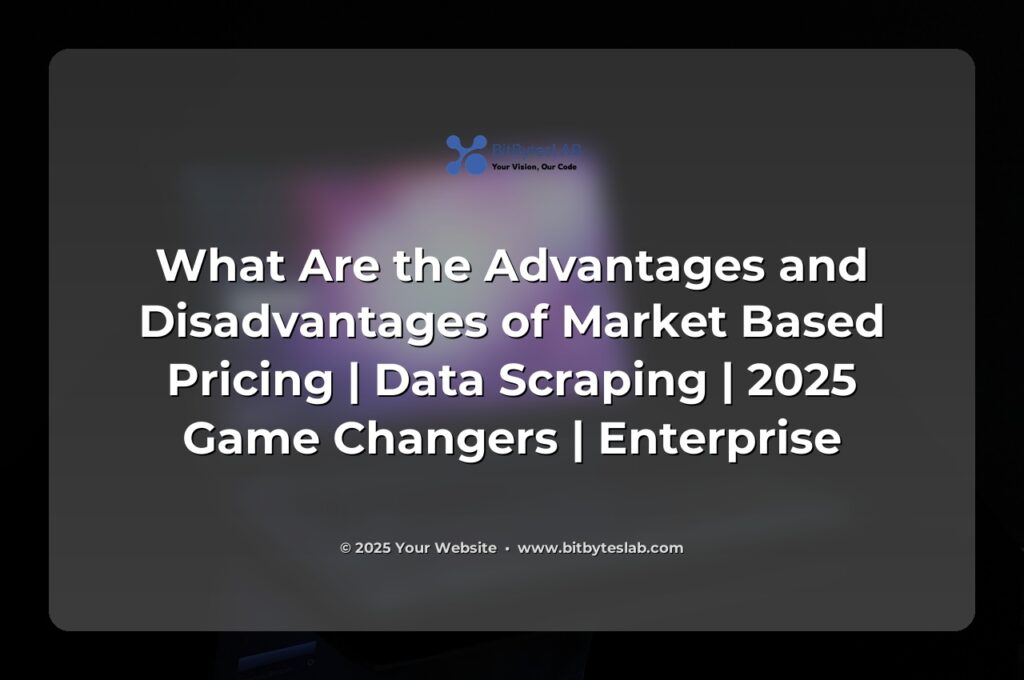Ever wondered why some brands seem to know exactly how to price a product in the moment, while others are stuck in a price‑fixed rut? 🎯 In 2025, the answer lies at the intersection of market‑based pricing and data scraping—an alliance that turns raw web signals into razor‑sharp revenue moves.
From bustling e‑commerce marketplaces to the volatile airline seat inventory, the modern price war is fought with algorithms that digest terabytes of data every hour. Yet many enterprises still rely on static price boards, missing out on a staggering 8–12% margin lift that real‑time pricing can unlock. The gap isn’t just about who has the fastest servers; it’s about how you turn messy, ever‑changing web content into clean, actionable intelligence.
At its core, market‑based pricing is a dynamic system that adjusts prices in real time based on supply, demand, competitor moves, and a host of market signals. To feed those systems, you need a steady stream of fresh data—prices, inventory levels, sentiment scores, and even regulatory changes. That’s where automated scraping and extraction become the lifeblood of a data‑driven pricing engine.
Think of it like this: your pricing algorithm is a chef, and the web is the pantry. Without a reliable supply chain that brings in fresh ingredients, the chef can’t whip up a winning dish. The same principle applies—scraping frameworks, data pipelines, and AI‑enhanced extraction are the sous‑chefs that keep the pantry stocked and the flavors consistent.
In practice, a modern scraping stack starts with a crawl strategy that respects robots.txt and rate limits, moves through parsing layers that capture price tags and pagination, cleanses data to a unified schema, enriches it with geolocation or sentiment, stores it in a scalable lake, and finally feeds the result into a pricing engine that can be tested via A/B experiments before being pushed live. Each step is a safety net that protects your revenue stream from data silos, stale feeds, or legal pitfalls.
🐍 Python is named after Monty Python, not the snake. Now that’s some comedy gold! 🎭

Once your pipeline is humming, the real artistry lies in strategy. Start by flagging the most price‑sensitive products—those with the highest elasticity—and focus your scraping resources there. Use reinforcement learning models that reward revenue gains while penalizing price erosion. And don’t forget the power of augmenting scraped data with social sentiment or macro‑economic feeds; a spike in search volume can signal an upcoming demand surge that justifies a price bump.
Industry reports show that retailers who implement dynamic pricing see an average uplift of 15% in gross margin, while airlines that tie seat pricing to real‑time booking data report a 10% rise in load factor. Even small B2B suppliers who adopt a scrape‑to‑price loop can shave 7% off procurement costs by always buying at the lowest market rate.
⚡ The key is consistency: a modular architecture where scraping, cleaning, enrichment, and pricing are decoupled allows teams to scale each component independently. A “selector‑watch” system can catch when a competitor’s site redesign breaks your CSS selectors, and an automated alert can trigger a quick fix before a price lag erodes your competitive edge.
🤖 Why do programmers prefer dark mode? Because light attracts bugs! 🐛

Business applications of a well‑engineered scrape‑pricing loop span across sectors. In retail, continuous competitor price monitoring eliminates markdown wars. Travel providers can adjust seat prices within minutes of a competitor’s fare drop, securing higher occupancy. Insurance carriers can benchmark policy rates against a live feed of regional offerings, ensuring they stay attractive while complying with regulatory pricing caps.
When it comes to ROI, the numbers are hard to ignore. A mid‑size e‑commerce brand that invested $200k in a scraping and pricing platform saw a 12% boost in revenue and a 15% improvement in inventory turnover within six months. The ROI, calculated on a 12‑month horizon, topped 250%—a figure that convinces even the most skeptical CFOs.
Yet the journey is not without bumps. IP blocking, CAPTCHAs, and site redesigns can halt data flow. Legal compliance is another minefield—GDPR, CCPA, and emerging scraping regulations demand rigorous data governance. And as models are fed stale data, they drift, degrading pricing decisions. The smartest teams tackle these challenges with resilience: rotating residential proxies, building conversational AI that can adapt to layout changes, and implementing continuous retraining pipelines that keep models in sync with the market.
Looking ahead, 2025 is shaping up to be a year of transformative tech. Large language models are becoming first‑class web scrapers, parsing any page into structured JSON without hand‑crafted selectors. Edge‑based scraping nodes will distribute crawl loads, cutting latency and reducing the risk of IP bans. Privacy‑preserving data sharing—through federated learning and differential privacy—will enable enterprises to collaborate on pricing intelligence without exposing raw data.
These trends open new doors: imagine a marketplace where real‑time price feeds are standardized via APIs, or a decentralized data exchange where verified competitor data is bought and sold on a blockchain with immutable audit trails. For the savvy enterprise, the future is about turning data extraction into a competitive moat that not only informs pricing but also anticipates market shifts.
In the end, mastering market‑based pricing through robust data scraping isn’t just a technical feat—it’s a strategic imperative that can reshape revenue, inventory, and brand perception. With the right architecture, governance, and continuous innovation, your business can move from reactive pricing to predictive, revenue‑maximizing precision.
Ready to take the leap? BitBytesLab specializes in building scalable, compliant, and AI‑powered web scraping solutions that power tomorrow’s dynamic pricing engines. Let us turn your data into a revenue engine that never sleeps.

